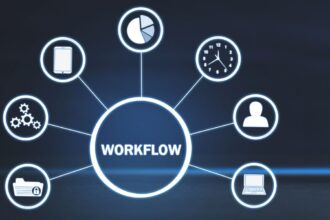AI SaaS Product Classification Criteria
The artificial intelligence software-as-a-service (AI SaaS Product Classification Criteria) market has exploded into a multi-billion dollar industry, with thousands of products competing for attention. From chatbots that handle customer service to predictive analytics platforms that forecast market trends, AI SaaS solutions span virtually every business function imaginable.
But here’s the challenge: with so many options available, how do you make sense of this crowded marketplace? Whether you’re a buyer evaluating solutions, an investor analyzing opportunities, or a product manager positioning your offering, understanding how to classify AI SaaS products becomes essential.
This guide breaks down the key criteria used to categorize AI SaaS products, helping you navigate this complex landscape with confidence. You’ll learn the frameworks that industry experts use, the factors that matter most for different stakeholders, and practical approaches for evaluating any AI-powered software solution.
Understanding AI SaaS Product Categories
AI SaaS products can be grouped using multiple classification systems, each serving different purposes. The most effective approach combines several criteria to create a comprehensive picture of where a product fits in the market.
By Core AI Technology
The underlying AI technology often determines a product’s capabilities and use cases. Machine learning platforms like DataRobot focus on predictive modeling, while natural language processing tools such as sentiment analysis software excel at understanding text and speech.
Computer vision solutions tackle image and video analysis challenges, from medical imaging diagnostics to manufacturing quality control. Conversational AI products, including chatbots and virtual assistants, handle human-computer interactions through natural dialogue.
Each technology type brings distinct strengths and limitations, making this classification particularly useful for technical evaluations and development planning.
By Business Function
Functional classification groups AI SaaS products by the business problems they solve. Marketing automation platforms leverage AI for personalization and campaign optimization. Sales tools use predictive analytics to identify high-value prospects and forecast revenue.
Customer service solutions deploy chatbots and sentiment analysis to improve support experiences. Human resources platforms apply AI to recruitment screening, employee engagement analysis, and performance predictions.
Financial AI tools handle fraud detection, risk assessment, and automated accounting processes. Operations-focused products optimize supply chains, predict equipment maintenance needs, and streamline workflows.
This classification system proves especially valuable for business stakeholders who need to understand how AI SaaS products align with their organizational needs.
Technical Classification Criteria
Model Complexity and Architecture
AI SaaS products vary dramatically in their technical sophistication. Simple rule-based systems handle straightforward tasks like data validation or basic categorization. These products typically offer high reliability but limited adaptability.
Machine learning solutions range from traditional algorithms like linear regression to advanced deep learning networks. The complexity level affects everything from implementation timelines to ongoing maintenance requirements.
Ensemble models combine multiple algorithms to improve accuracy and robustness. These sophisticated approaches often deliver superior results but require more computational resources and expertise to manage effectively.
Data Requirements and Processing
Different AI SaaS products have vastly different data needs. Some solutions work effectively with small datasets, while others require massive amounts of training data to function properly.
Real-time processing capabilities distinguish products that can analyze data as it arrives from those that work on batch processing schedules. This distinction becomes critical for applications like fraud detection or dynamic pricing.
Data quality requirements also vary significantly. Some AI systems can handle messy, incomplete datasets, while others demand clean, well-structured information to perform optimally.
Integration and Deployment Models
Cloud-native solutions offer scalability and ease of deployment but may raise data security concerns for sensitive applications. On-premises options provide greater control but require more internal resources to manage.
API-first products excel at integration with existing systems, while all-in-one platforms offer comprehensive functionality but may create vendor lock-in situations.
The deployment model affects not just technical implementation but also long-term costs, scalability options, and compliance requirements.
Market-Based Classification Approaches
Target Market Segmentation
Enterprise AI SaaS products typically offer advanced features, robust security, and extensive customization options. These solutions command higher prices but provide the scalability and support that large organizations require.
Mid-market products balance functionality with affordability, often focusing on specific use cases or industries. They provide enough sophistication for growing businesses without enterprise-level complexity.
Small business AI SaaS tools prioritize ease of use and quick implementation over advanced features. These products often use freemium models and self-service onboarding to reduce barriers to adoption.
Industry Specialization
Vertical AI SaaS products target specific industries with tailored features and compliance capabilities. Healthcare AI tools must meet HIPAA requirements, while financial services products need to handle regulatory reporting.
Horizontal solutions work across multiple industries but may lack the specialized features that vertical products provide. The choice between horizontal and vertical often depends on whether industry-specific functionality outweighs broader applicability.
Pricing and Business Models
Subscription-based products dominate the AI SaaS space, but pricing structures vary widely. Per-user pricing works well for collaboration tools, while usage-based models suit products where consumption varies significantly.
Freemium approaches let users experience AI capabilities before committing to paid plans. This model works particularly well for products with viral growth potential or network effects.
Enterprise licensing often includes custom pricing, dedicated support, and service level agreements. These arrangements typically involve longer sales cycles but higher customer lifetime values.
Evaluation Framework for Classification
Performance Metrics and Benchmarks
Accuracy measurements provide the foundation for evaluating AI SaaS products, but different applications require different metrics. Classification problems focus on precision and recall, while regression tasks emphasize error rates and correlation coefficients.
Speed and latency become critical factors for real-time applications. A fraud detection system that takes minutes to process transactions offers little practical value regardless of its accuracy.
Reliability and uptime requirements vary by use case. Mission-critical applications demand 99.9%+ availability, while analytical tools may tolerate occasional downtime for maintenance.
User Experience and Accessibility
Interface design significantly impacts adoption rates, especially for AI products that may intimidate non-technical users. The best AI SaaS solutions hide complexity behind intuitive interfaces while providing power users with advanced configuration options.
Training requirements affect total cost of ownership and time-to-value. Products that require extensive user training may struggle with adoption even if they offer superior functionality.
Support and documentation quality becomes particularly important for AI products, where users often need help understanding results and optimizing configurations.
Scalability and Future-Proofing
Growth accommodation capabilities determine whether a solution can evolve with your needs. Some AI SaaS products hit performance walls at predictable points, while others scale smoothly as usage increases.
Technology roadmaps reveal how actively vendors invest in improving their AI capabilities. Products built on outdated approaches may become obsolete as the field advances rapidly.
Vendor stability and financial health affect long-term viability. Even excellent AI technology becomes worthless if the company behind it fails or gets acquired and discontinued.
Making Informed Classification Decisions
Effective AI SaaS product classification requires balancing multiple criteria based on your specific needs and constraints. Start by clearly defining your primary use case and success metrics, then evaluate products against the classification framework most relevant to your situation.
Technical teams should prioritize model architecture and integration capabilities, while business stakeholders might focus more on functional fit and pricing models. The key lies in using multiple classification approaches to build a complete picture of each product’s strengths and limitations.
Remember that the AI SaaS landscape evolves rapidly. Products that seem cutting-edge now may become commoditized within months, while new categories emerge regularly. Regular reassessment of your classification criteria ensures your evaluation framework stays current with market developments.
By applying these AI SaaS product classification criteria systematically, you’ll make more informed decisions, whether you’re selecting solutions, positioning products, or analyzing market opportunities. The time invested in thorough classification pays dividends in better outcomes and reduced risk across your AI initiatives.
















